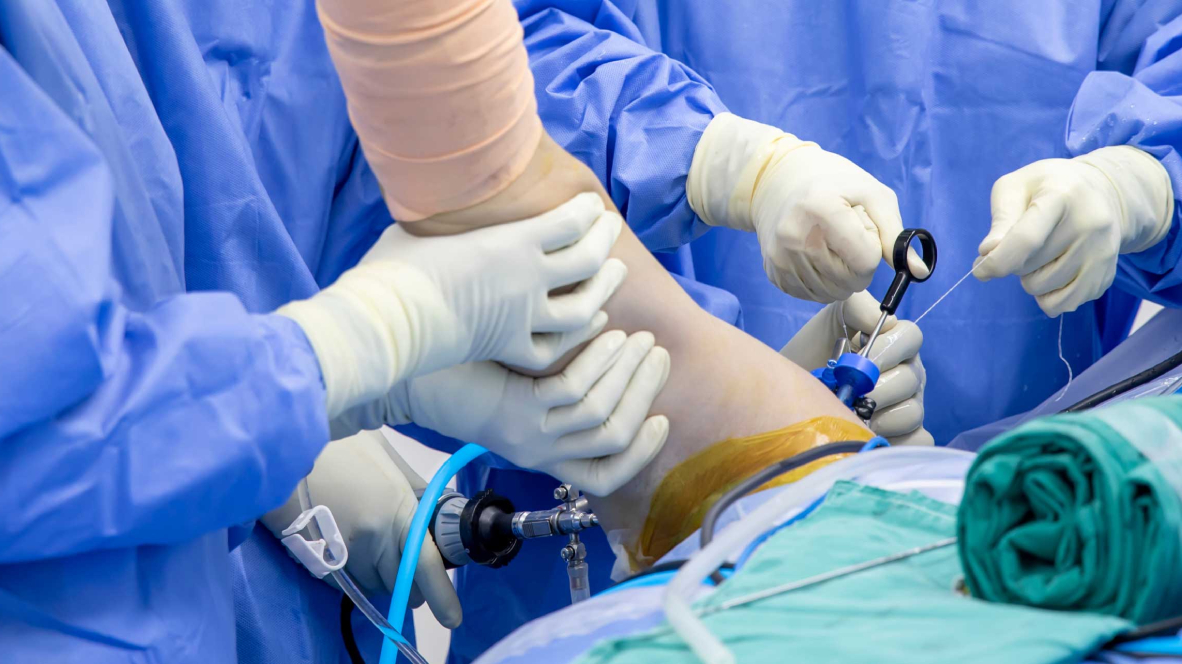
Arthroscopy is a minimally invasive surgical procedure used to diagnose and treat problems within a joint. This procedure involves inserting a small camera, called an arthroscope, into the joint through a small incision. The camera projects images of the inside of the joint onto a screen, allowing the surgeon to see and operate with precision. Arthroscopy is commonly used for joints such as the knee and shoulder to treat a variety of conditions.
Causes:
- Knee Conditions:
- Meniscal tears
- Ligament injuries (ACL, PCL)
- Cartilage damage
- Loose bodies in the joint
- Synovitis (inflammation of the joint lining)
- Shoulder Conditions:
- Rotator cuff tears
- Labral tears (SLAP lesions)
- Shoulder impingement syndrome
- Frozen shoulder (adhesive capsulitis)
- Osteoarthritis and rheumatoid arthritis
Symptoms:
- Knee Symptoms:
- Pain and swelling
- Limited range of motion
- Instability or locking of the knee
- Difficulty bearing weight
- Clicking or popping sounds
- Shoulder Symptoms:
- Pain, especially during movement or at night
- Stiffness and limited range of motion
- Weakness in the shoulder
- Catching, popping, or grinding sensations
- Swelling or tenderness around the shoulder
Diagnosing:
- Physical Examination: Assessment of joint function, range of motion, and stability.
- Imaging Tests:
- X-rays to detect bone abnormalities.
- MRI or CT scans to visualize soft tissue structures like ligaments, cartilage, and tendons.
- Arthroscopy: A minimally invasive procedure using a small camera (arthroscope) inserted into the joint to directly visualize the interior structures and identify problems.
Treatment Options:
- Non-Surgical Treatments:
- Rest, ice, compression, and elevation (RICE)
- Physical therapy and rehabilitation exercises
- Anti-inflammatory medications and pain relievers
- Corticosteroid injections
- Arthroscopy Surgery:
- Knee Arthroscopy:
- Meniscus repair or removal
- Ligament reconstruction (e.g., ACL reconstruction)
- Cartilage repair or debridement
- Removal of loose bodies
- Shoulder Arthroscopy:
- Rotator cuff repair
- Labrum repair
- Subacromial decompression
- Removal of inflamed tissue or loose bodies
- Treatment of shoulder instability
- Knee Arthroscopy:
Prevention Tips:
- Strengthening Exercises: Regular exercises to strengthen the muscles around the knee and shoulder to provide better support and stability.
- Proper Technique: Use proper techniques in sports and physical activities to avoid joint strain and injuries.
- Warm-Up and Stretching: Perform warm-up and stretching exercises before engaging in physical activities to prepare the joints and muscles.
- Protective Gear: Use appropriate protective gear such as knee pads and shoulder braces during high-risk activities.
- Weight Management: Maintain a healthy weight to reduce stress on the knee joints.
